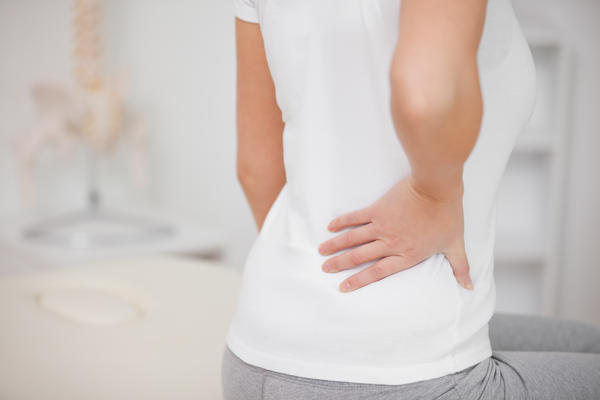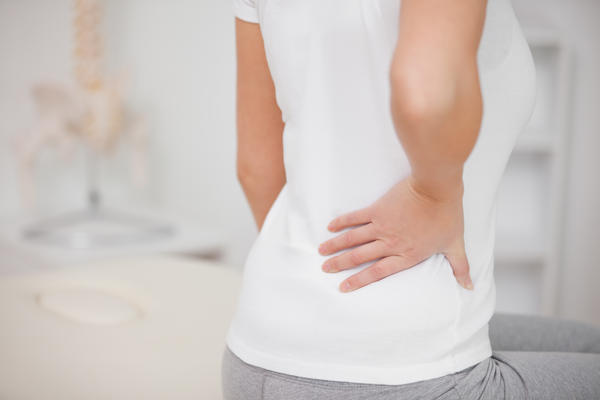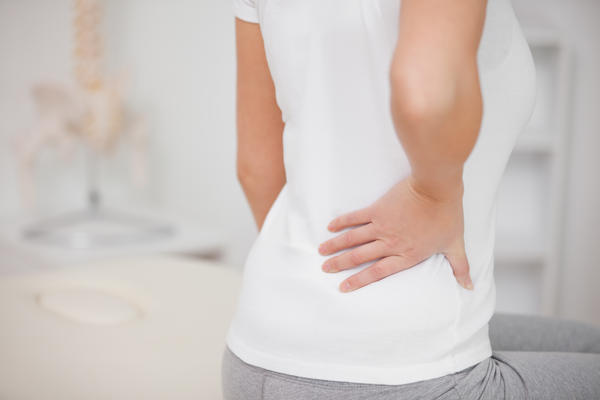Postpartum Back Pain

Contents:
- Lower Back Pain After Baby
- Causes of Back Pain After the Birth
- Back Pain After Childbirth and its Possible Consequences
- What to Do in Case of Postpartum Back Pain, Pain in the Lower Back, Tailbone, Field Vane?
- Treatment of Pulling and Acute Back Pain
- Preventing and Relieving Back Pain After the Delivery
Lower Back Pain After Baby
Many young moms complain of a strong postpartum back pain. Unpleasant symptoms require a special attention, they shouldn’t be treated as a normal consequence of pregnancy or delivery. All changes in the woman’s body caused by pregnancy are provided by nature and theoretically should be painless and reversible. If you experience postpartum back pain, there is a reason for it. Let's see what causes uncomfortable sensations in various areas of the back and how to cope with them.
Causes of Back Pain After the Birth
There are many reasons of postpartum back pain. First of all, it may be the exacerbation of already existing spinal problems, even if the woman was unaware of them. Pregnancy and delivery provoke the aggravation of minor deviations, which may cause pain.
During gestation, the body undergoes multiple changes: from obvious (weight gain and shift of the center of gravity) to hidden from the eyes such as hormonal changes, displacement of internal organs and bones, softening of cartilages. A delivery even without surgery and anesthesia can cause various deformations and pinching in the spine. Quite often carrying about the newborn becomes the last straw leading to a sharp deterioration of the back’s condition.
After the birth, natural changes in the body reverse. The body gets used to its normal weight, muscles’ activity restores, the center of gravity shifts, progesterone levels drop, which reduces the elasticity of cartilages and ligaments. The rehabilitation takes at least six months, but usually a year or even more. However, it isn’t worth treating painful sensations as inevitable.
Back Pain After Childbirth and its Possible Consequences
If you have a strong postpartum back pain, don’t postpone the solution of this problem. A bad posture can cause fluid retention in the body and as a result weight gain. "Distortions" of the spine sometimes cause lactostasis (painful milk engorgement), and even postpartum depression may be caused by a pinched nerve in the vertebrae. Back problems may contribute to the emergence of many diseases of the heart, stomach, lungs, gallbladder, uterus, ovaries.
What to Do in Case of Postpartum Back Pain, Pain in the Lower Back, Tailbone, Field Vane?

How to relieve postpartum back pain? If you experience severe pain or permanent uncomfortable sensations in the back, first, you’d better visit a neurologist to eliminate major back problems such as inflammation, slipped intervertebral disks or nerve endings and muscle diseases.
The doctor may only advise you to wear a postpartum brace or corset. If a spinal disc herniation( protrusion of an intervertebral disc above and beyond the main vertebrae) is suspected, you will be recommended to undergo MRI (magnetic resonance imaging) of the spine. This study is safe for nursing moms. MRI level-by-level pictures muscles, vertebrae, nerve roots.
X-ray is more accessible from the financial point of view, but it isn’t so informative and harmless. If necessary, a treatment will be appointed: medication, physiotherapy, manual therapy course. Keep in mind that you cannot delay the treatment of the hernia. It’s a serious disease that often requires a surgical intervention.
If MRI does not detect any problems, the doctor may suggest that back pain is caused by diseases of internal organs. In this case, you will be recommended to undergo an ultrasound and make a biochemical blood test and urinalysis. The tests will help to identify problems with kidneys, pancreas, liver, while the ultrasound may detect structural changes of internal organs.
Treatment of Pulling and Acute Back Pain
Treating back pain after the delivery you should follow the doctor's recommendations. Nursing mothers are prohibited to use drugs, as most of them get to the baby with milk. The main treatment methods in the postpartum period is gymnastics, massage, physiotherapy (magnetotherapy, electrophoresis, d'arsonval), manual therapy, acupuncture.
If you experience severe pain, limit physical exertion, take a comfortable posture to relieve pain. Standing and sitting increases painful sensations, you’d better lie on the back with knees bent at 90°. To take the right posture, put a pillow or a rolled cover under the knees.
If the pain is so severe that it is impossible to endure, it is permissible to take painkillers such as paracetamol, ketonal, diclofenac and nimesil. However, in the future, be sure to consult your doctor!
Preventing and Relieving Back Pain After the Delivery

To prevent or relieve painful sensations in the postpartum period, try to stick to the following rules:
1. Avoid heavy labor, at least first 5-6 months after the birth. Back and abdomen muscles need time to restore, while excessive load may cause pain in the back.
2. Monitor your weight. The more you weigh, the more load you put on your back and the harder is postpartum recovery.
3. Feed your baby in a comfortable position. For many moms, it’s comfy to feed the baby lying on the side. If you prefer feeding in the sitting position – use an armchair with a high supportive back. Put legs on a small stool or ottoman.
4. Sleep on a hard mattress. Soft surface of mattress relaxes the muscles, which contributes to a spinal deformity. If you already have some back problems, a soft mattress will only exacerbate them. You’d better to use a tough and elastic orthopedic pillow or cushion to support the neck.
5. Do special exercises for the back. Gymnastics should be aimed at strengthening the muscles of the back and abdomen. Focus on the regularity, not on the complexity of exercises.
6. Avoid sudden movements.
Move smoothly:
- rising from a lying position, turn on the side, bend your knees, lean on your arm and only then sit down and get up;
- to raise the baby or something heavy from the floor (for example, a bucket of water) try to squat with a straight back or kneel instead of bending;
- do not carry heavy things on the long arms, try to make it so that the main burden falls on the feet;
- while vacuum cleaning, lean your arm upon the leg – it will reduce load on the back.
7. Carefully choose a stroller or a carrier. There is only one important requirement for a stroller: the handle should be above your waist. As for carriers, it’s a bit more complicated: there are different kinds of them, and not all are good for the mom and the baby. A sling or a sling-scarf are the best options to decrease the load on the back. They provide different wrapping variants and evenly distribute the baby’s weight.
8. Make your home life easier. Use mops and brushes with a long handle. A robot vacuum cleaner will spare you from bending while cleaning. If you ought to purchase products for the whole family – use a backpack instead of an ordinary bag.
9. Pay attention to the height of baby's furniture and other items. A baby cot, a changing table, a bath should fit your height. Performing routine operations you shouldn’t overload your back. Adjust the height of the cot and use a stand for the baby’s bath.
10. Walk more and if possible go to the pool. Such loads will restore and strengthen your back’s muscles.